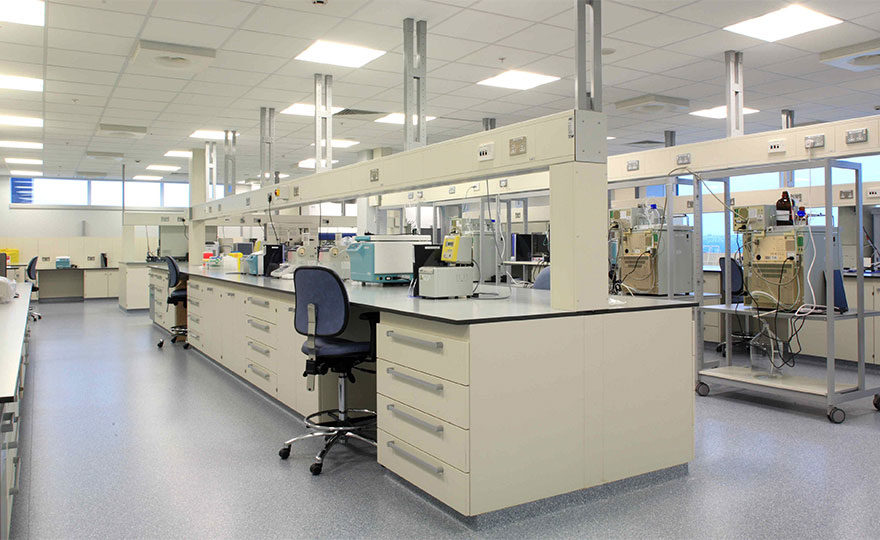(1) Barite Is Heavy!
This is kind of a “no brainer,” as barite is added to drilling and frac fluid to make it more dense and add weight. But, we had some bags of drilling barite in the lab getting prepared for testing recently, and it always amazes me just how heavy the mineral is.
When drilling grade barite is powdered into a 200 mesh product, it looks and feels a lot like the protein powder you make your shake with after a workout.
So, my mind always assumes the bags will weigh around the same as that protein powder, but when I lift the bag of barite up, it weighs like 4 times as much as I think it will!
It has been great touching, examining, and testing (not tasting!) all the different minerals, metals, and products that we get to test in the lab!
(2) 100 Mesh Frac Sand – Looks Can Be Deceiving.
Normally, the sphericity and roundness test result gives a good prediction as to how the sand will perform under crush testing.
The rounder and spherical the particles, generally the better the sand fraction performs under frac sand crush testing.
With the case of 100 mesh sand (aka 70/140 sand) sometimes that isn’t the case. Some 100 mesh does not appear to be significantly round and spherical under the microscope. Then, when it’s tested with crush testing, it performs at a high level, sometimes up to 11k and 12k!
Generally speaking, if 20/40 and 30/50 sand have sharp corners and edges, they will perform poorly under crush testing. That isn’t always the case for 100 mesh sand.
(3) Safety Data Sheets (SDSs) Are Detailed.
We have been doing some SDS testing here at the lab, and boy, are those SDSs detailed and long these days!
There are 16 parts to each safety data sheet, and each section requires a significant level of detail and description.
In some cases, coordination would be required among various labs and safety experts to research and carefully consolidate the info into 1 SDS.
(4) Field Observations Are Fun.
We love getting reports from the field.
It gives my employees and me a relief from working in the lab all day!
Recently, a colleague sent me a video from the field, showing the frac sand dunes on a property they are selling.
Here is the video (if you are interested in possibly buying this property, let me know and I can link you with the seller): https://drive.google.com/open?id=1HsYXIFdQ5NUi9gwPbPtrHfeM3yusA7XR
(5) Attrition Scrubbing In The Lab Is Often Trial and Error.
Sand clusters must be broken down before frac sand testing can happen. This requires a process called attrition scrubbing.
During attrition scrubbing, sand and water are used in our lab scale scrubber in order to use “sand on sand” action to reduce the clusters down into single particles, so they can be properly testing.
The API spec for clusters is less than 1%.
In many cases, if a sample is clustered, we may need to scrub, wash, dry, and then re-scrub as different sands require multiple passes through our bench scale scrubber.
Check out our other social media pages!

